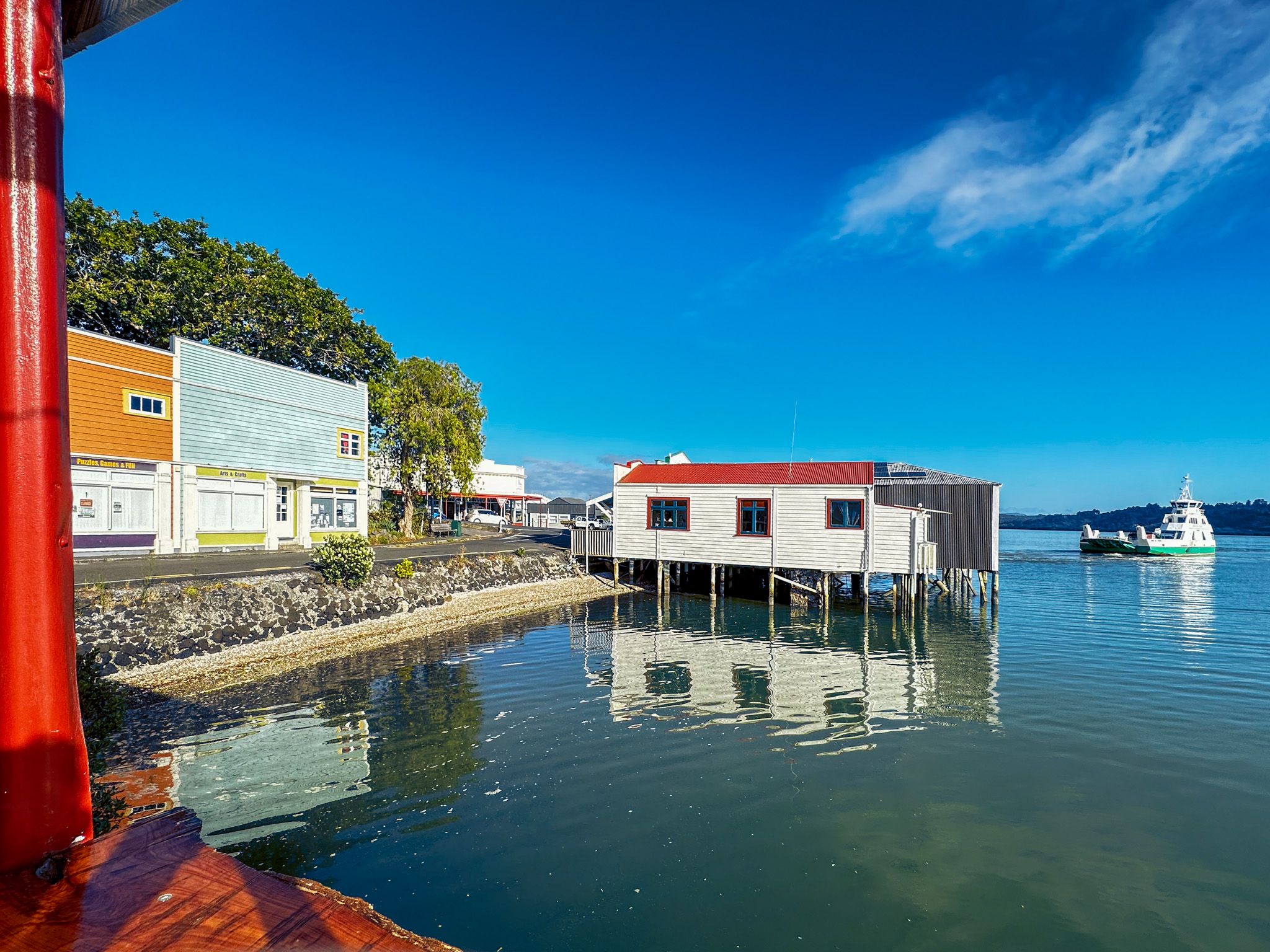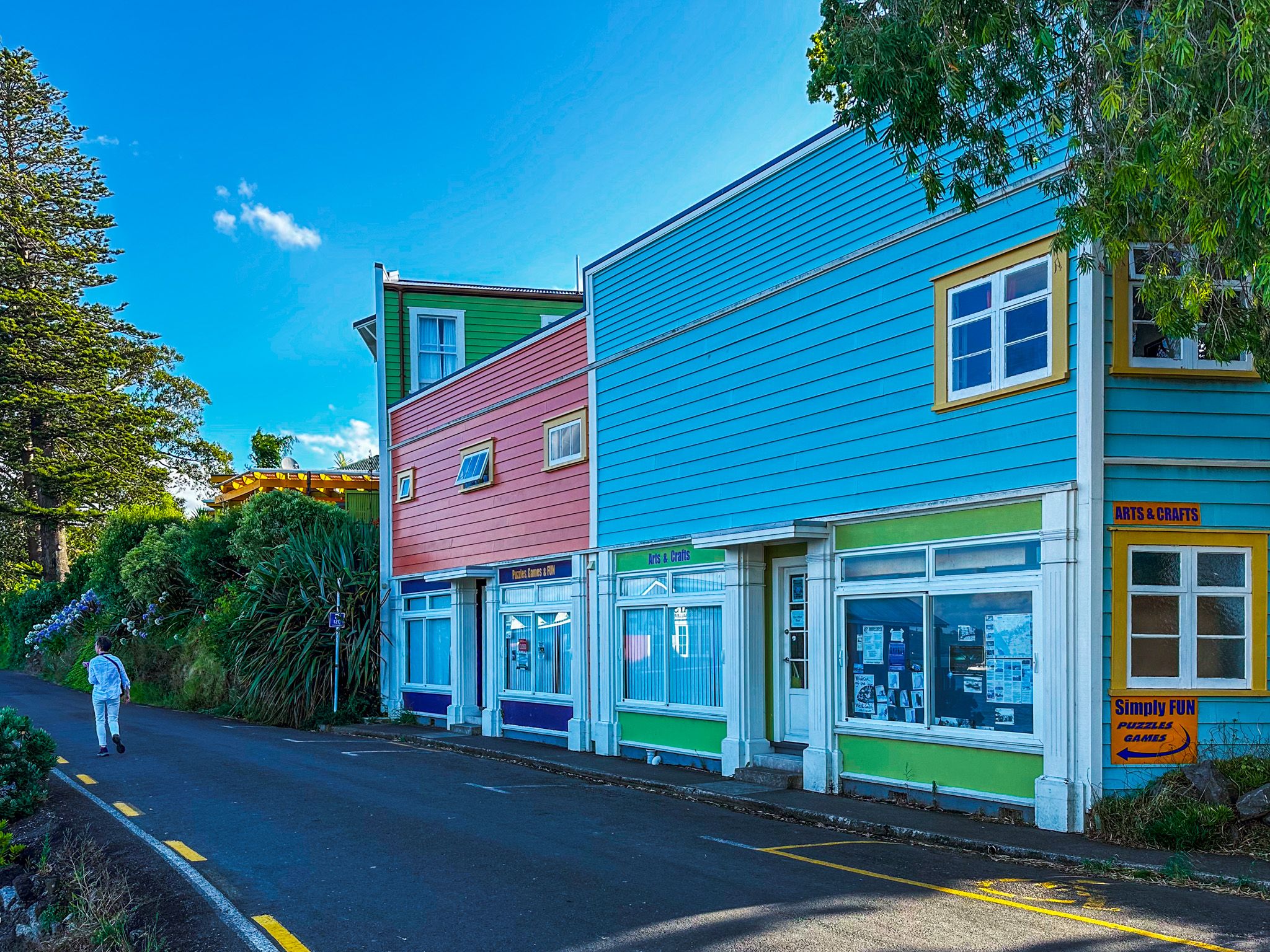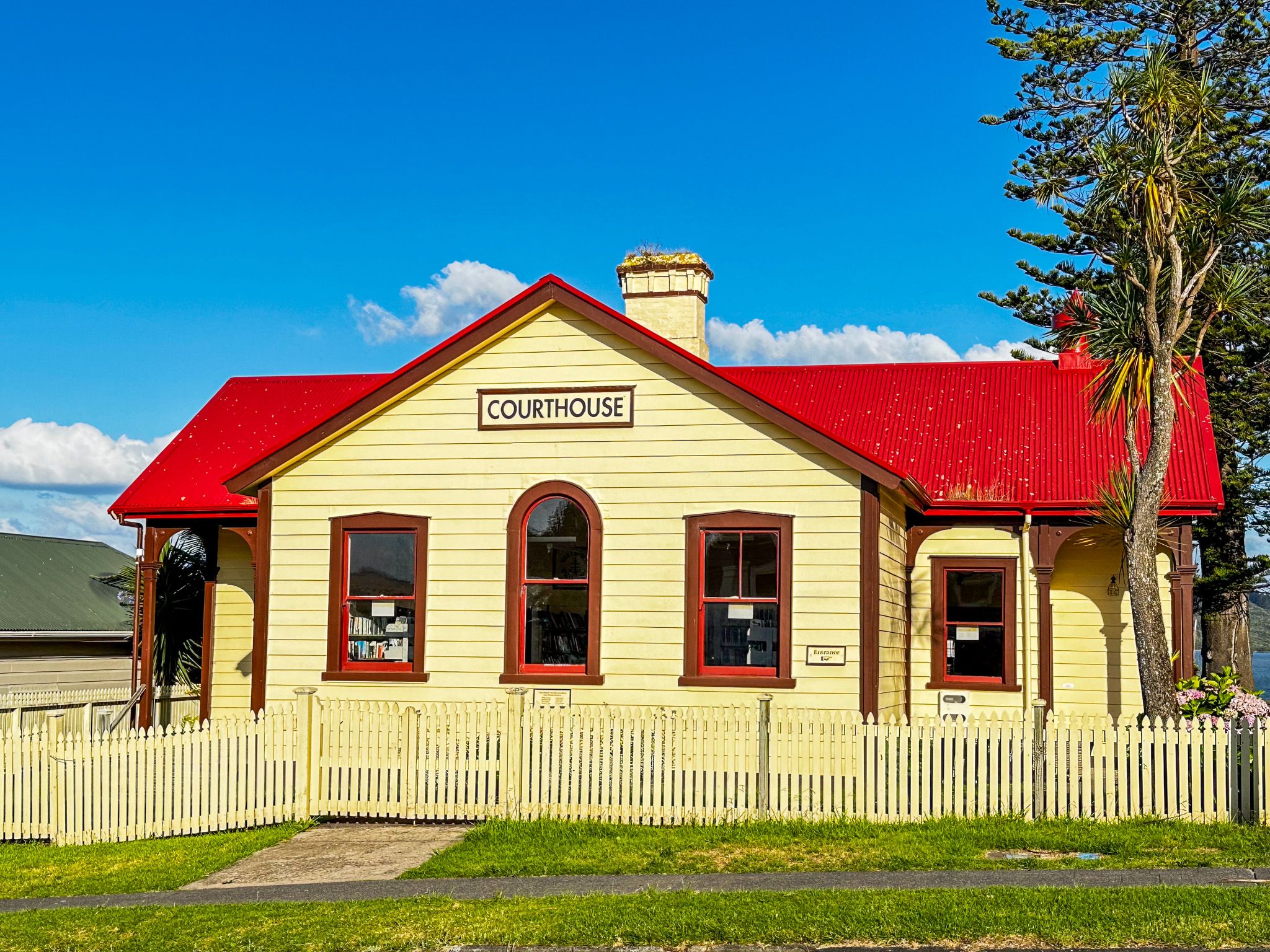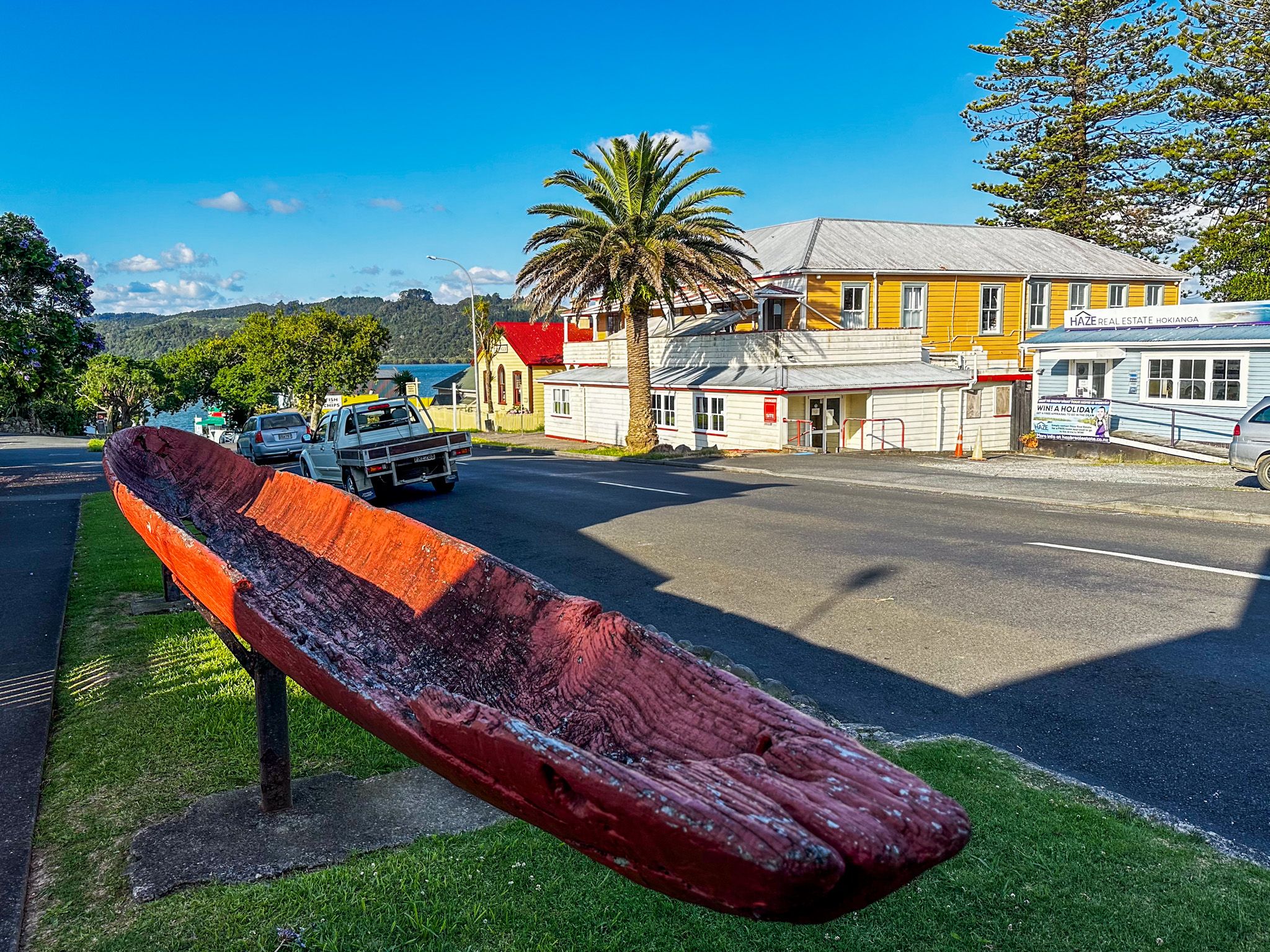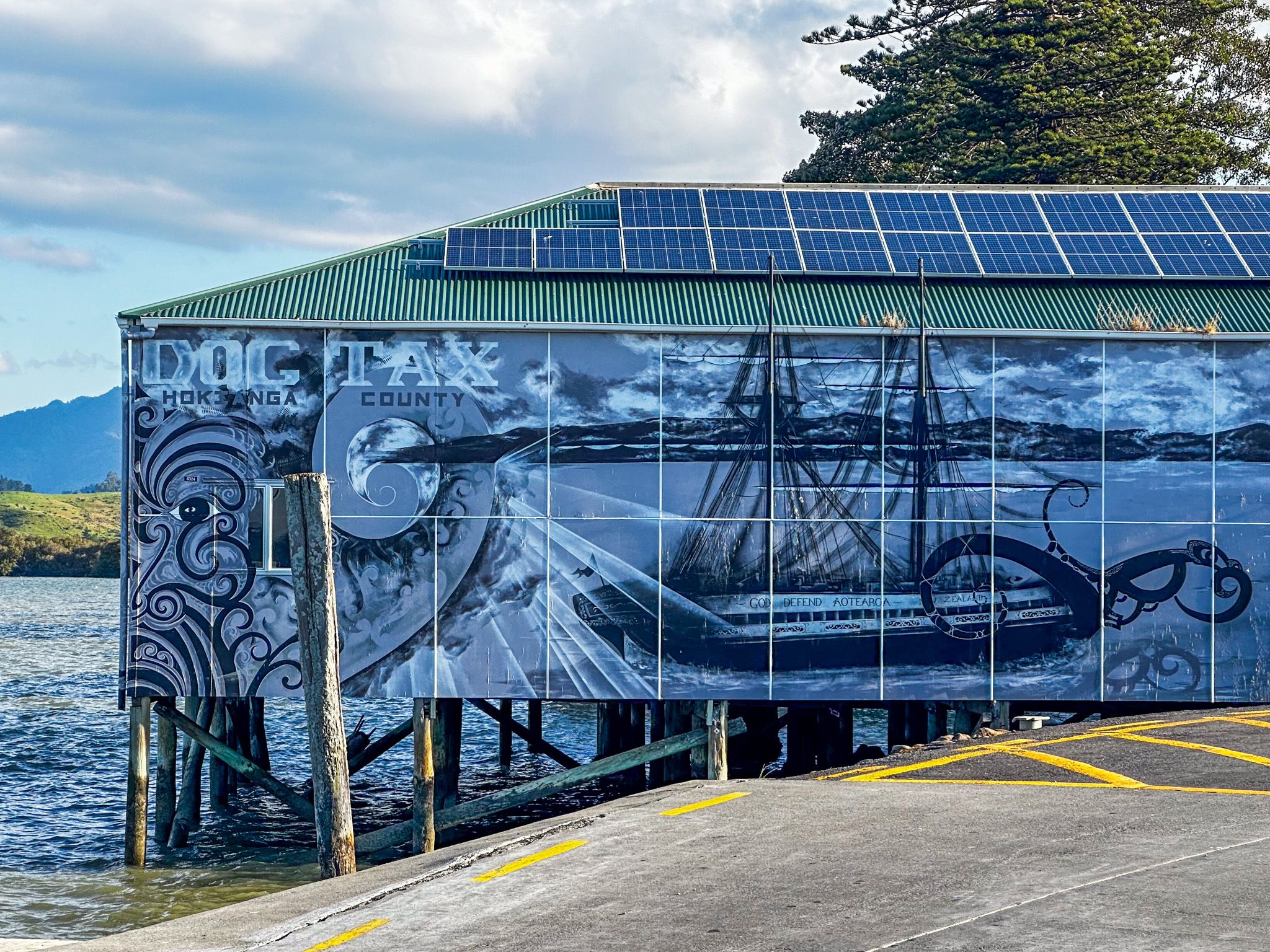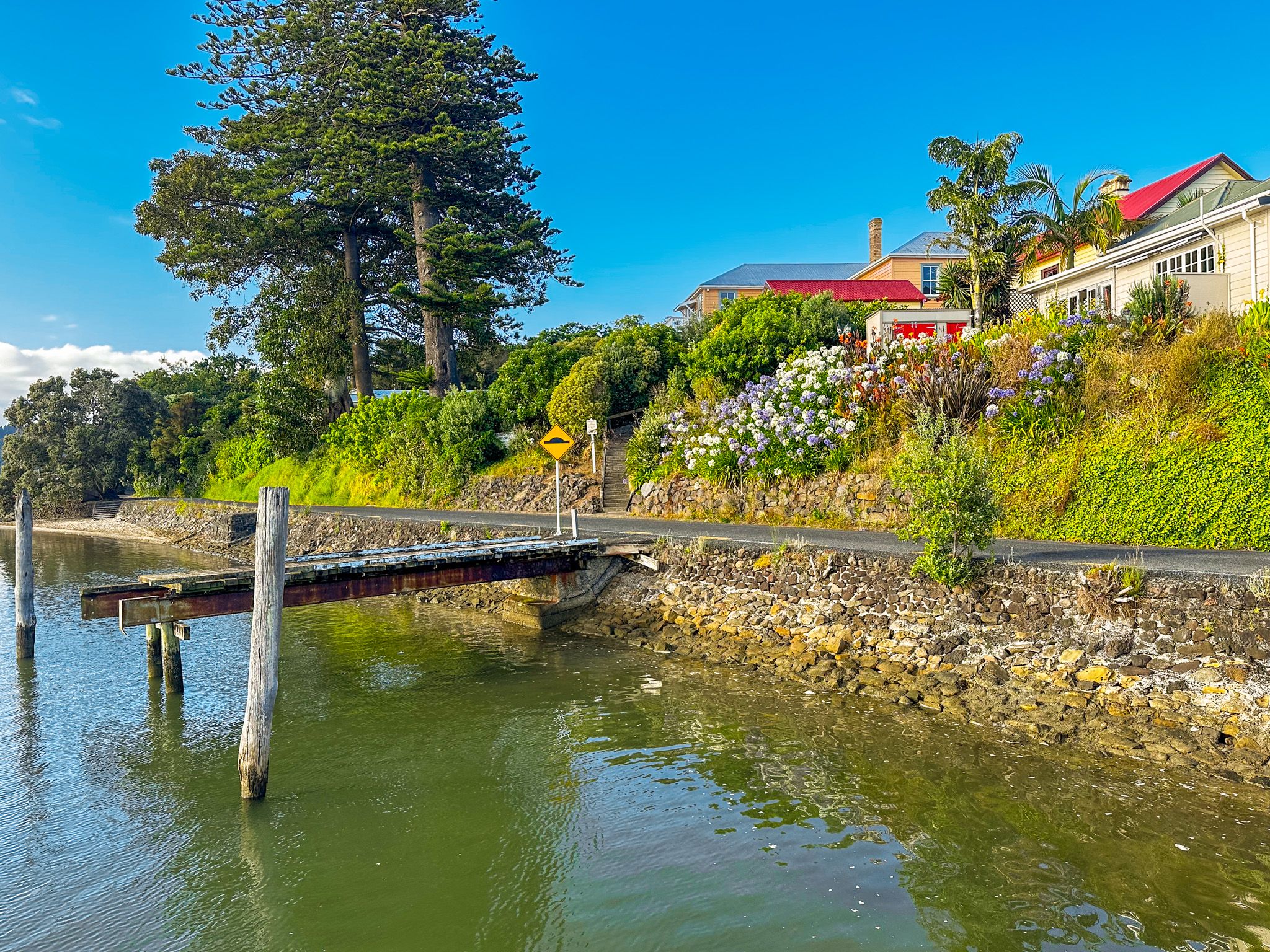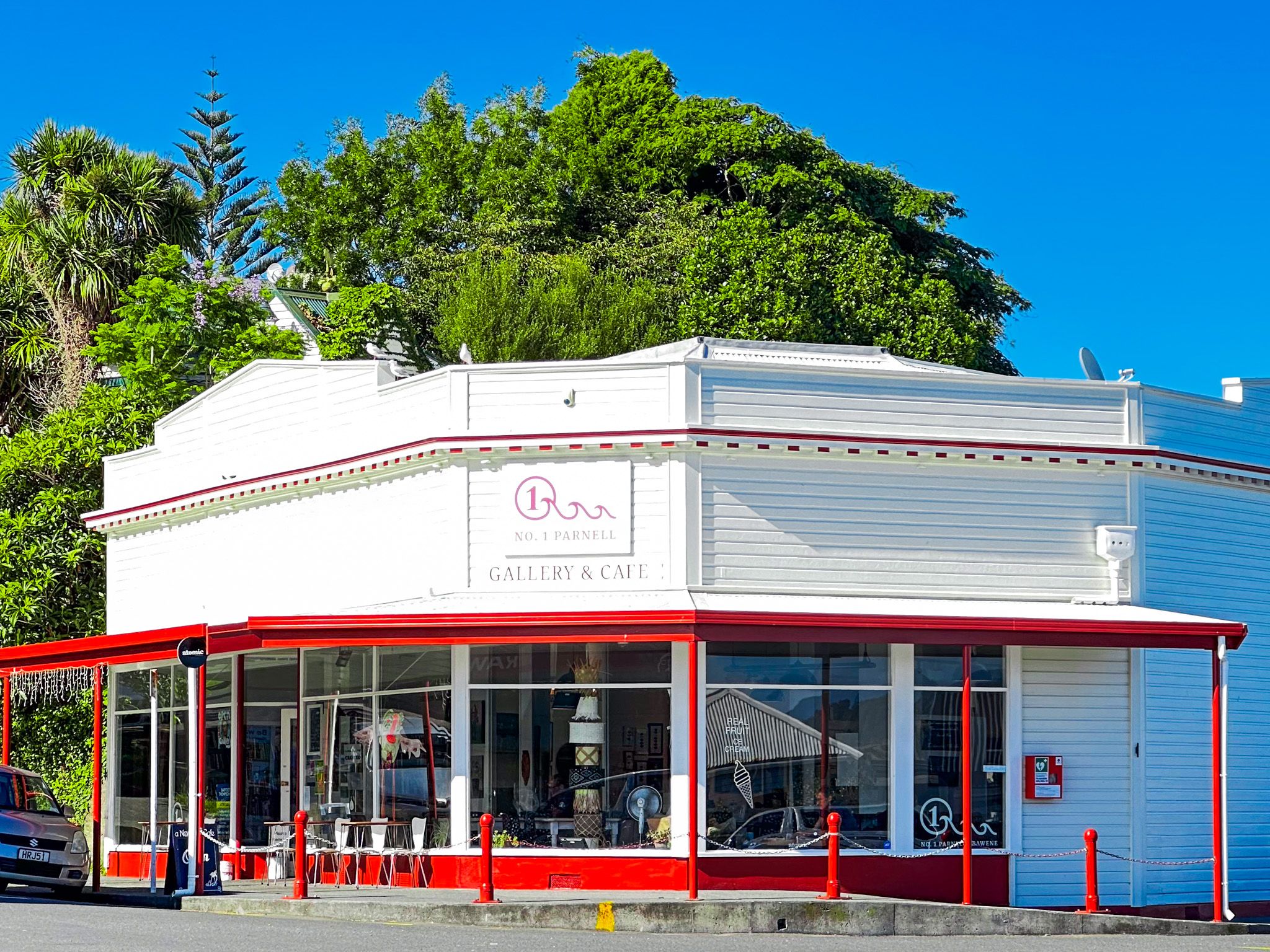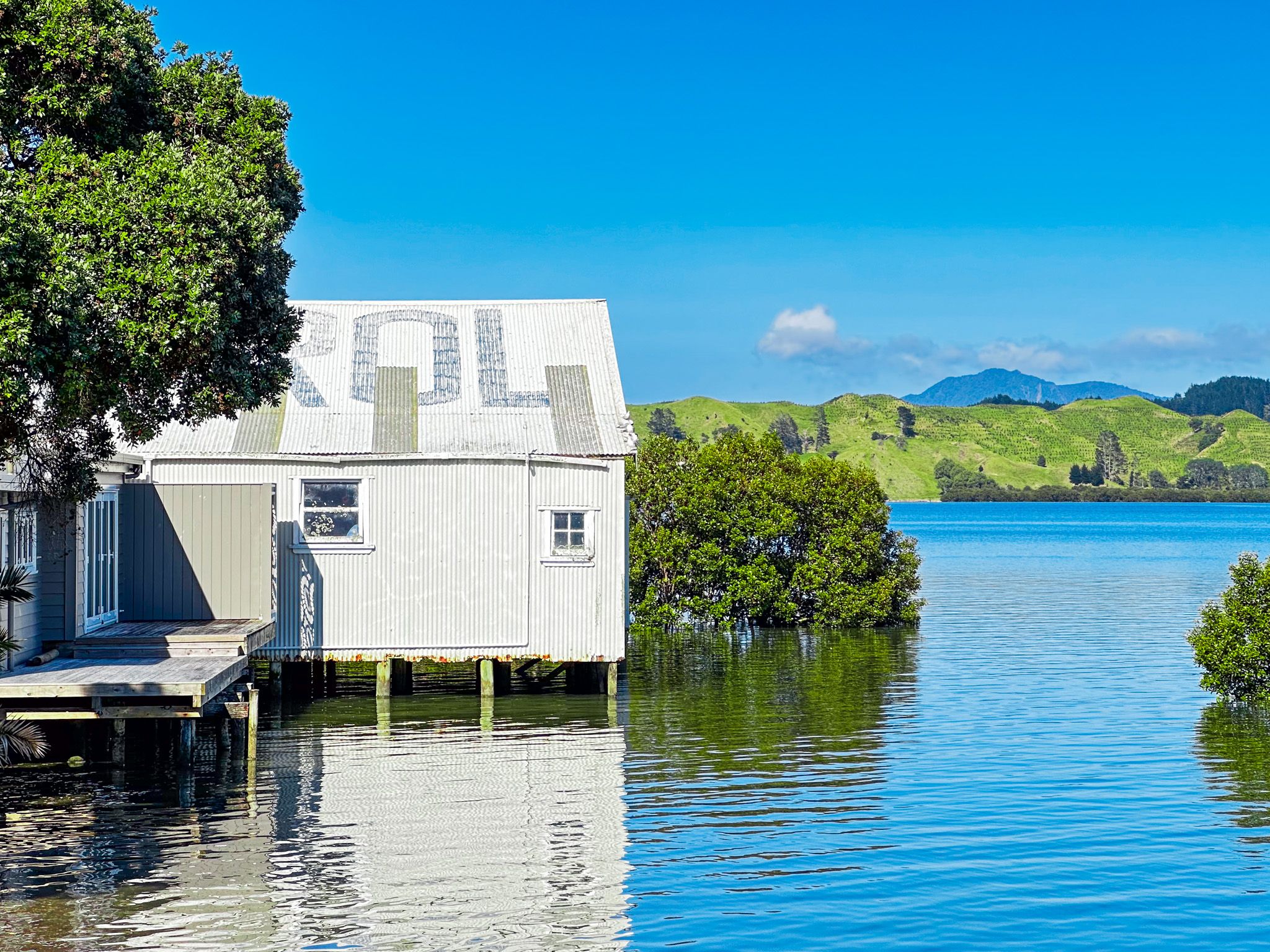Rawene means “a beautiful sunset.” This is apt as this small Northland town sits at the end of a peninsula pointing north into Hokianga Harbour, bounded by the Omanaia and Waima Rivers. From there, you have a perfect sunrise and sunset views over the harbour.
Access to the town is from State Highway 12, a short drive along Rawene Road. A wharf on the point supports the Rawene Ferry that goes across the harbour to Kohukohu. The short ferry trip is a highlight of a visit to the Hokianga. In addition, several attractive pre-1900s wooden commercial buildings form the centre of the town around the point.
Tourism has been good for the town, with the addition of galleries and cafes, including the popular Boatshed Cafe that sits over the water a short distance from the wharf. Mangroves are the main coastal feature, and a mangrove boardwalk is southeast of the wharf. This walk also shows Rawene’s industrial past, taking you through the remains of long-gone timber mills.
The town was one of the earliest European towns in NZ. Like Horeke and Kohukohu, its genesis was in the kauri timber trade, with a mill and shipyards. In 1822, Captain James Herd in the Providence was the first to enter the harbour and take out a timber cargo. In 1825. he returned with 60 settlers and negotiated the purchase of a huge area of land around the harbour on behalf of the New Zealand Company. The deal was disputed, but the town was eventually established. For years, Europeans called the town Herd's Point, then Hokianga Township. In 1884, it became Rawene.
In 1862, James Clendon, a United States Consul to New Zealand, settled there and served as a local magistrate with his wife Jane. Jane was a local Māori and was just 34 with seven young children when Clendon died, leaving the family heavily indebted. Jane traded her way out of debt, raised the children and died in the house at 81. Today, Clendon House is open to the public.
Although small, Rawene has had a couple of memorable moments. It was a hot spot in the Dog Tax War of 1898. This was not a real war, but the residents of Rawene temporarily left when armed Māori objecting to dog registration fees briefly entered the town. Bob Cochrane, a local publican, invited the protestors in for a beer, which defused the situation, and they returned to Waima. Subsequently, the dispute was settled without violence.
More salubrious is the Hokianga Hospital's history. Dr. George Smith headed the hospital in Rawene from 1914 to 1948 and was a significant innovator. He developed a method for painless childbirth using drugs. People flocked to the area for their births, with the annual number rising from thirty to two hundred. His approach was novel, so subject to an investigation, which showed his results were among the country's best. The Hokianga healthcare services (now Hauora Hokianga) have retained their operating independence ever since.
